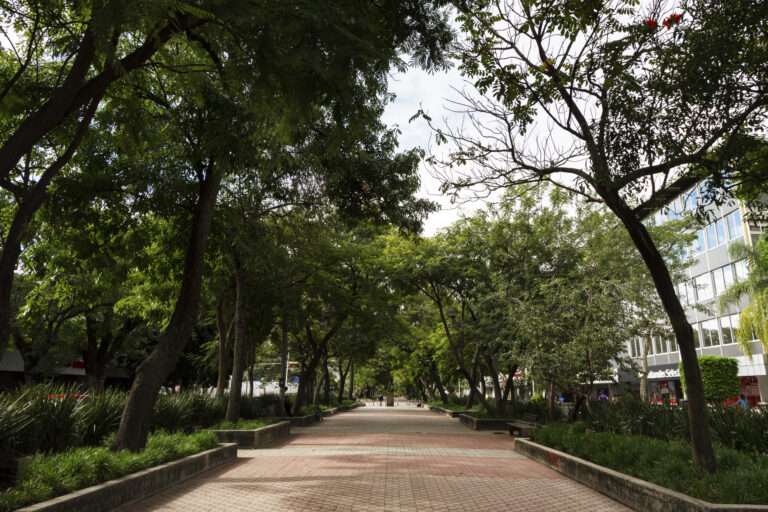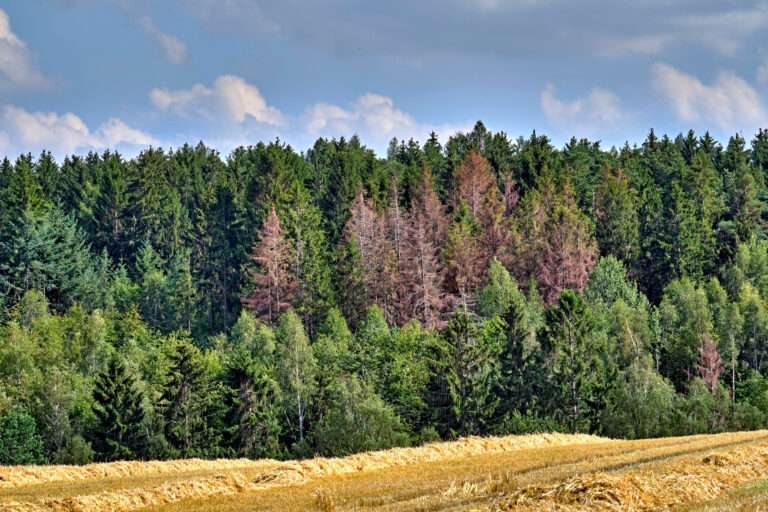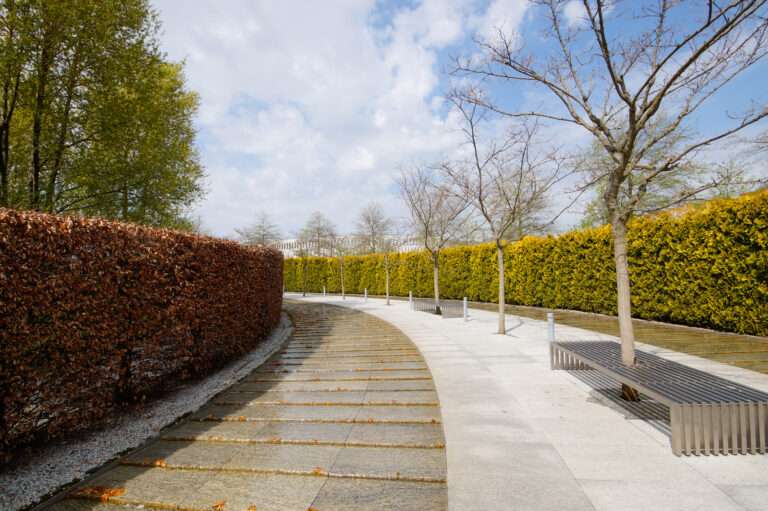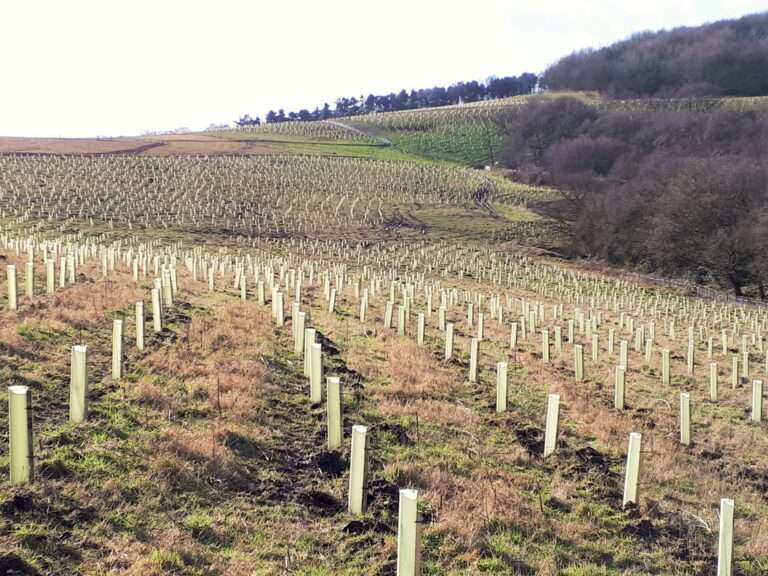Designing Low-Maintenance Amenity Gardens: Smart, Sustainable Spaces That Look After Themselves
Amenity gardens serve a valuable purpose in towns, housing developments, retail parks and business estates—but without careful planning, they can become high-cost burdens. Straggly bedding, thirsty plants and constant pruning cycles soon drain budgets and reduce visual impact.
So how do you design amenity gardens that stay beautiful without demanding endless upkeep? The answer lies in using the right plants, layout techniques and maintenance-conscious design principles from day one.
In this blog, we explore how to create low-maintenance amenity gardens that are attractive, durable, and cost-efficient—designed to perform in real-world UK conditions.
Why Choose Low-Maintenance Garden Design?
Low-maintenance doesn’t mean low-quality. In fact, the best-designed spaces:
- Save time and money on mowing, pruning, watering and weeding
- Look better for longer with seasonal structure and colour
- Withstand public use and weather extremes
- Support biodiversity and reduce chemical inputs
When properly planned, amenity gardens can offer both beauty and practicality, even in high-traffic or exposed urban locations.
For expert support in implementing your design, see our amenity planting services page.
1. Choose Resilient, Long-Lived Plants
Focus on perennials, evergreen shrubs and ornamental grasses that thrive in the UK climate and cope with pollution, drought or poor soils.
Best performers:
- Lavandula angustifolia (Lavender) – Fragrant, drought-tolerant and wildlife-friendly.
- Geranium ‘Rozanne’ – Long-flowering and spreads without becoming invasive.
- Euphorbia characias – Evergreen with architectural structure.
- Miscanthus sinensis – Ornamental grass with year-round appeal.
- Sarcococca confusa – Evergreen shade-lover with scented winter flowers.
Avoid plants that:
- Need constant deadheading
- Are prone to pests
- Outgrow their space quickly
2. Limit Lawn Areas
Lawns are one of the most high-maintenance features in amenity spaces. They require:
- Regular mowing
- Edge trimming
- Fertilising and weed control
- Irrigation in dry periods
If not essential, swap lawn for meadow-style planting, gravel beds, bark mulch zones or robust ground covers like Vinca minor or creeping thyme.
These alternatives reduce upkeep while increasing ecological value.
3. Design for Structure and Simplicity
Clean, well-organised planting layouts make maintenance easier.
Tips:
- Use repeated blocks of the same plant species
- Keep borders geometrically simple (avoid fiddly corners)
- Space plants well to reduce weed invasion
- Add mulch (bark, gravel or organic matter) to suppress weeds and retain moisture
Visual repetition also creates a cohesive look with fewer species to manage.
4. Minimise the Need for Pruning
Choose plants with:
- Naturally compact growth
- Good form without heavy intervention
- Slower growth rates
Low-prune heroes:
- Choisya ternata (Mexican Orange Blossom)
- Heuchera varieties
- Cornus alba (Dogwood) – prune once yearly for winter stems
- Hebes – minimal clipping required
This reduces labour time while still achieving a structured, tidy garden space.
5. Plan for All-Season Interest
Instead of relying on high-turnover bedding, build a core palette of perennials and shrubs that offer colour and structure year-round.
Add layers of:
- Spring bulbs (e.g. Allium, Tulip, Narcissus)
- Summer perennials (e.g. Salvia, Nepeta)
- Autumn grasses (e.g. Panicum, Pennisetum)
- Winter interest (e.g. Cornus stems, evergreen foliage)
This ensures the space never looks neglected, even when few flowers are in bloom.
6. Use Ground Cover Plants to Control Weeds
Ground covers fill gaps fast, suppress weeds, and stabilise soil.
Top picks include:
- Ajuga reptans
- Alchemilla mollis
- Vinca minor
- Geranium macrorrhizum
- Thymus serpyllum
They’re a natural alternative to chemical weed control, especially useful on banks or borders.
7. Install Irrigation or Water-Wise Design
Where watering is essential:
- Use drip irrigation systems to reduce waste and avoid overwatering
- Group plants by water need for targeted care
Better still, choose drought-tolerant species and mulch heavily to keep soil moisture stable.
This approach cuts summer maintenance costs significantly.
8. Incorporate Hard Landscaping Thoughtfully
Use durable materials that require little cleaning or repair.
Smart choices:
- Resin-bound gravel for paths
- Corten or steel edging
- Recycled or weathered paving
- Raised beds for control and aesthetics
Hard materials add contrast, reduce green maintenance zones, and help define layout without complexity.
Frequently Asked Questions
Can low-maintenance gardens still support biodiversity?
Yes. Using native plants, pollinator-friendly perennials, and reducing chemical use creates a better environment for wildlife with less intervention.
How often should a low-maintenance garden be maintained?
Typically, maintenance visits can be reduced to monthly or even quarterly—focused on weed checks, pruning and replanting as needed.
Are wildflower meadows high or low maintenance?
Meadows are low-input once established but do require annual cutting and some weed control. They’re ideal for low-traffic zones.
Can low-maintenance gardens look modern or formal?
Absolutely. With strong form, repeated planting and clean lines, you can achieve highly professional, stylised results with minimal upkeep.
Conclusion
Designing a low-maintenance amenity garden doesn’t mean compromising on impact. With the right approach—selecting resilient plants, simplifying layouts, and designing for year-round appeal—you can deliver attractive, functional green spaces that stay tidy and cost-effective.
Whether you’re managing estates, public spaces, or commercial grounds, these principles ensure your gardens work hard without demanding more than they give back.
Killingley Insights is the editorial voice of NT Killingley Ltd, drawing on decades of experience in landscaping, environmental enhancements, and civil engineering projects across the UK.








